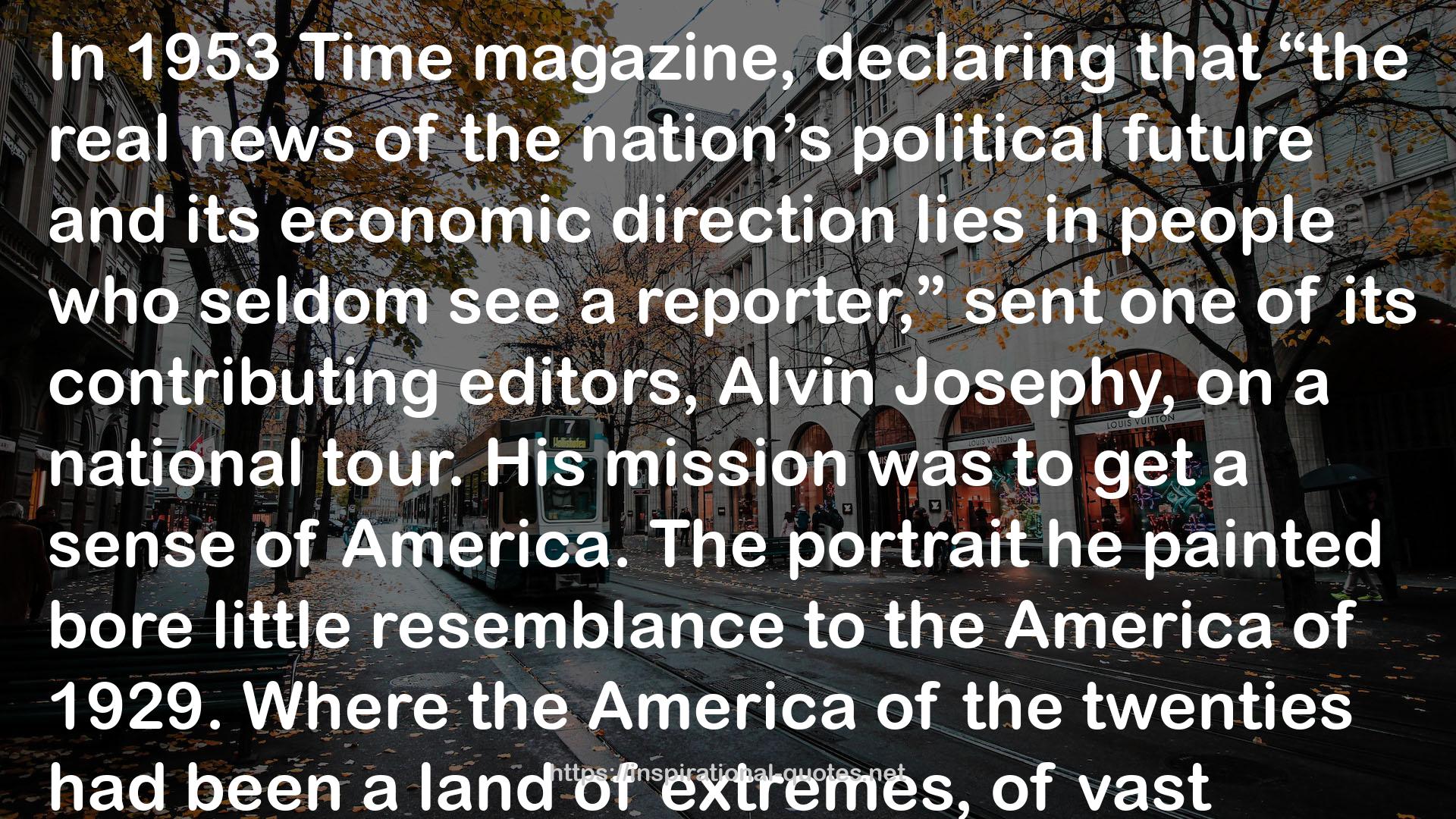" In 1953 Time magazine, declaring that “the real news of the nation’s political future and its economic direction lies in people who seldom see a reporter,” sent one of its contributing editors, Alvin Josephy, on a national tour. His mission was to get a sense of America. The portrait he painted bore little resemblance to the America of 1929. Where the America of the twenties had been a land of extremes, of vast wealth for a few but hard times for many, America in the fifties was all of a piece. “Even in the smallest towns and most isolated areas,” the Time report began, “the U.S. is wearing a very prosperous, middle-class suit of clothes…. People are not growing wealthy, but more of them than ever before are getting along.” And where the America of the twenties had been a land of political polarization, of sharp divides between the dominant right and the embattled left, America in the fifties was a place of political compromise: “Republicans and Democrats have a surprising sameness of outlook and political thinking.” Unions had become staid establishment institutions. Farmers cheerfully told the man from Time that if farm subsidies were socialism, then they were socialists.1 "
― Paul Krugman , The Conscience of a Liberal
